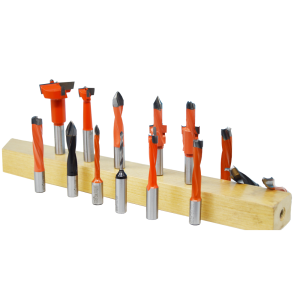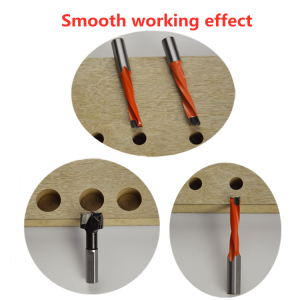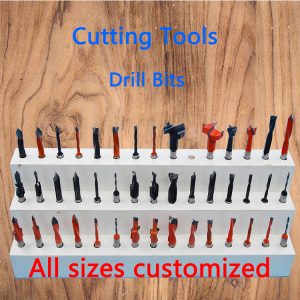Top Tips And Techniques To Polish Your Woodworking Skills
When I was a child, my grandfather had a workshop in his basement. He would supply us with wood, tools and hardware and we would create a myriad of imaginative crafts. If you have grown up with a love of woodwork, the tips below will help you master your craft.
You can use tape to catch excess glue. If you want to prevent oozing glue stains along joints, try clamping pieces together without using any glue. You just put tape on your joint, and then cut along it using a sharp blade. Separate your pieces, and then apply glue. After that, clamp them to each other again. Your glue will ooze on the tape instead of the wood. You can peel off the tape before your glue dries.
Familiarize yourself with the tools that you are going to use. This is a very important tip for the beginner, but even more advanced woodworkers can benefit from it too. Lay out the tools and make sure that you know the workings of each one. If you’ve got a brand new tool to you, spend the time that you need with it.
Before using any new tool, do your research on it in full. New tools can mean serious injuries for those that use them incorrectly. Even if you’re pretty sure of how to use it, don’t risk it. Study up via the web and books related to the tool in question.
Try using duct tape to create a level spot. If you’ve used your table saw on a base that’s mobile, you should be able to easily pull it in and out. To really finish it up, find a level spot on your floor. This also helps you saw boards without obstruction. Mark your wheel positions using duct tape that is brightly colored, and then roll the saw to that same flat spot each time you need to saw.
Know all about the wood you are getting prior to purchasing it, especially if you plan to stain it. Wood designated as “paint grade” is lower in quality and not suitable for staining. Also, particleboard and veneer will be a lot more different. Veneer isn’t going to absorb a lot of stain while your particleboard will absorb way too much. Getting the correct kind of wood will help you be sure that you can expect good results.
Make sure that you are wearing the appropriate protective gear when you are working on your woodworking projects. Your safety is of primary importance. Eye protection can protect your eyes from flying wood debris. A pair of strong gloves can protect your hand from splinters. Make sure that you have these essentials before you start on any projects.
Plan out your project and go over it a few times before you start. This will help prevent you from making mistakes that will ruin your project. You do not want to start it all over again, so plan it out well before you cut, screw or nail anything together.
When applying stain, work in a well-lit and well-ventilated area. When you make sure your project is under the strongest light in your work area, you more easily spot drips, runs and any spots you missed. Ventilation is also important to protect your health, and even on small projects, strong fumes can affect you by making you feel sick or giving you a headache.
Always check your tools before you begin using them. Woodworking with a faulty or overused tool can easily lead to a serious injury or destruction of your materials. To make sure that this does not happen to you take the time to thoroughly inspect your tools from top to bottom.
Never allow someone to watch while you are woodworking without wearing the same gear that you are wearing. Being anywhere near the tools is a hazard, even if they are not using them. Wood or parts of the tool could fly into the air and strike them just as they could you.
Only cut using sharp tools. Older and dull tools result in tear-outs and even chipping, which is frustrating and a waste of time. Sharp tools means you get clean cuts quickly. You’ll also spend a lot less time sanding things to get just the right look and fit that you need.
If you are new to woodworking, you should familiarize yourself with the different types of wood that are available. Different woods have different uses and some require special tools. The more you know about the wood you will be working with, the more comfortable you will be when you begin your project.
Sanding blocks are essential woodworking tools. You can create easy to reuse sanding blocks of your very own by simply cutting three-quarter-inch scrap lumber into rectangles measuring 4.75 x 4.50 inches. Cut pieces of cork tile to fit each block. Spray both the rectangle of wood and the rectangle of cork tile with adhesive and press them together. Allow to dry, then spray the backside of an entire sheet of sandpaper with adhesive. Place your newly made block on the sandpaper with the cork on the down-side. Allow to dry and then use a utility knife to cut the sandpaper around each block.
Attached a small magnet to the bottom of your hammer’s handle to hold several nails when working above your head or on a ladder. This simple technique allows you to keep your nails handy and avoid climbing up and down the ladder when you are working above your head.
Learn about the different type of wood and their characteristics. This will help you choose the right wood for your projects. For example, pine is a popular choice for common wood projects and furniture, but you have to be aware of the knots that can sometimes affect your cutting. A wood like maple has a smoother grain and less knots.
If you can take your love of working with wood and pass it on to your kids, you will imbue them with skills that last a lifetime. Use these tips to give them the right advice when it comes to completing their projects. That will ensure that they are able to keep this hobby going well into adulthood.


